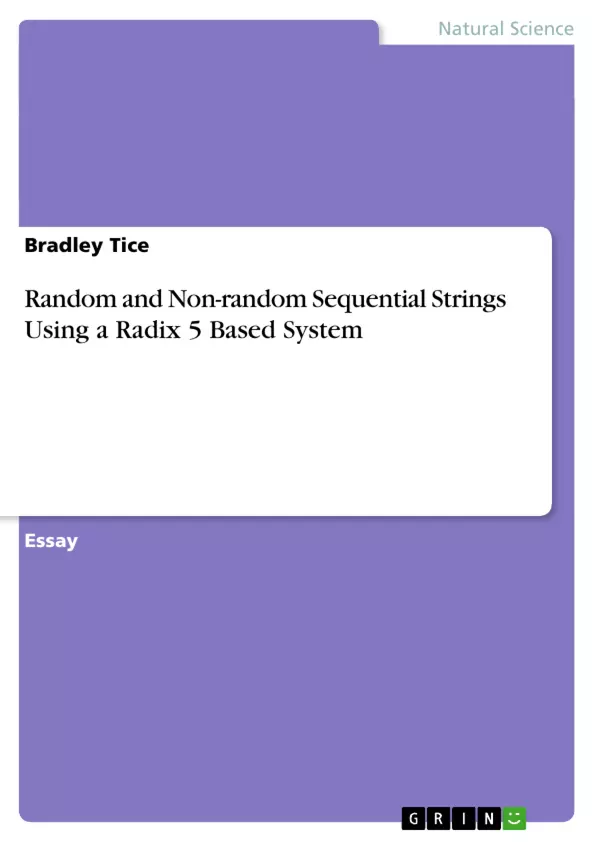The paper presents research using a Radix 5 based number system in both random and non-random forms. The Radix 5 based system will use an algorithmic complexity program to compress both random and non-random Radix 5 characters that result in the most compressed sequential strings known in statistical physics.
Inhaltsverzeichnis (Table of Contents)
- Random and Non-random Sequential Strings Using a Radix 5 Based System
- Introduction
- Traditional Literature and Kolmogorov Complexity
- Recent Work and Definition of Patterned Versus Patternless Sequential Strings
- Compression of a Random Binary Sequential String
- Compression of a Random Radix 5 Sequential String
- Conclusion
Zielsetzung und Themenschwerpunkte (Objectives and Key Themes)
This paper aims to explore the compression of both random and non-random sequential strings using a radix 5 system. It challenges traditional understandings of Kolmogorov complexity and its implications for the compression of random binary sequences. The author introduces a new sub-maximal measure of Kolmogorov complexity based on the identification and compression of subgroups within random strings.
- Kolmogorov Complexity and Algorithmic Information Theory
- Compression of Random and Non-Random Sequential Strings
- The Role of Subgroups in Compression
- A New Measure of Kolmogorov Complexity
- Application of the Radix 5 System
Zusammenfassung der Kapitel (Chapter Summaries)
The paper begins by outlining the traditional understanding of Kolmogorov complexity and its implications for the compression of random and non-random binary sequential strings. It then discusses recent work by the author that introduces a radix 5 system for analyzing sequential strings. The paper explores the concept of patterned and patternless strings, challenging the traditional definition of randomness in sequential strings and introducing a new sub-maximal measure of Kolmogorov complexity. The paper concludes by demonstrating the applicability of the radix 5 system to compression and its potential for greater reduction than binary strings.
Schlüsselwörter (Keywords)
Kolmogorov Complexity, Algorithmic Information Theory, Randomness, Sequential Strings, Compression, Radix 5 System, Subgroups, Patterned Versus Patternless Strings, Sub-maximal Measure
- Quote paper
- Professor Bradley Tice (Author), 2012, Random and Non-random Sequential Strings Using a Radix 5 Based System, Munich, GRIN Verlag, https://www.hausarbeiten.de/document/199140


